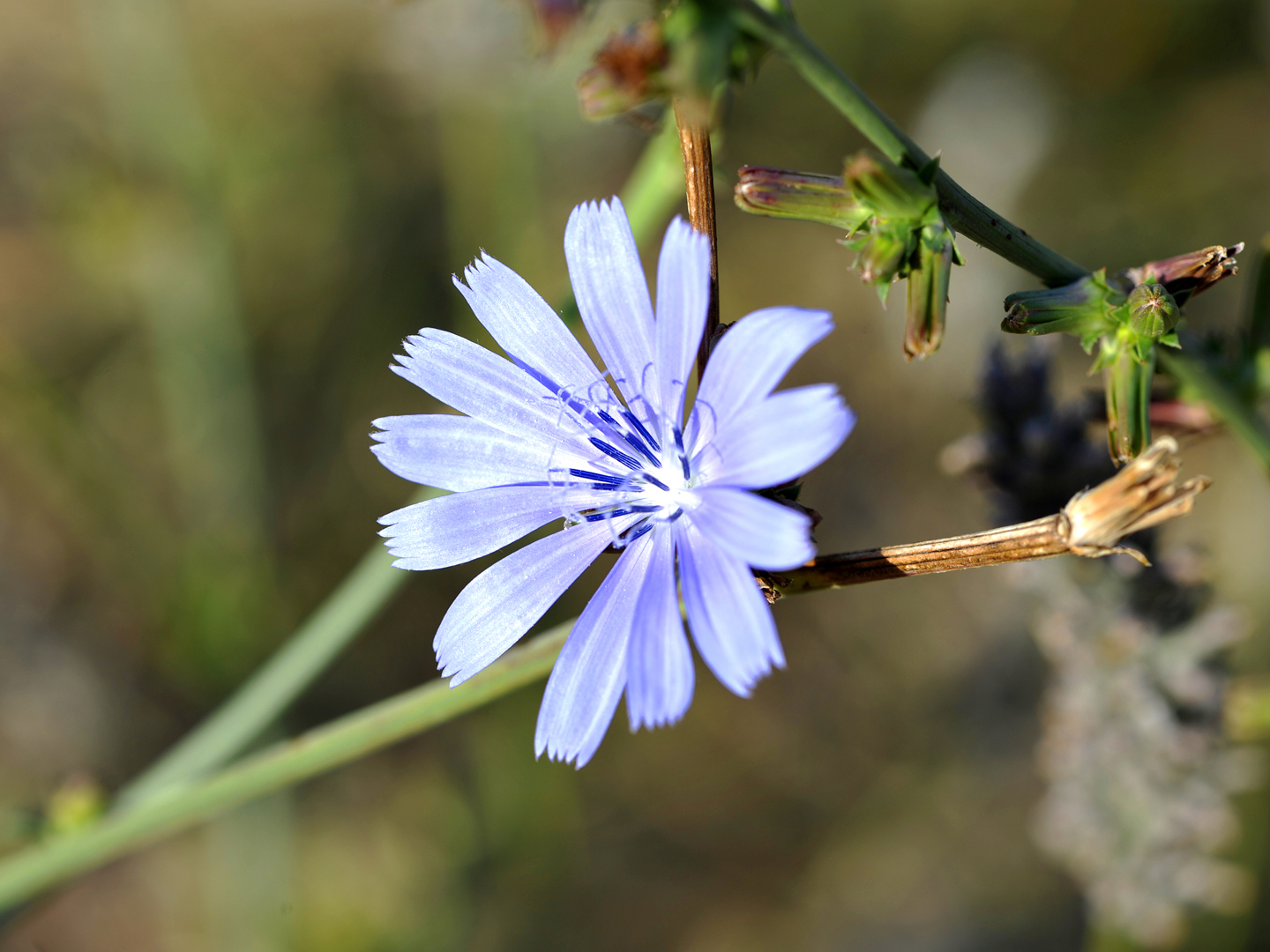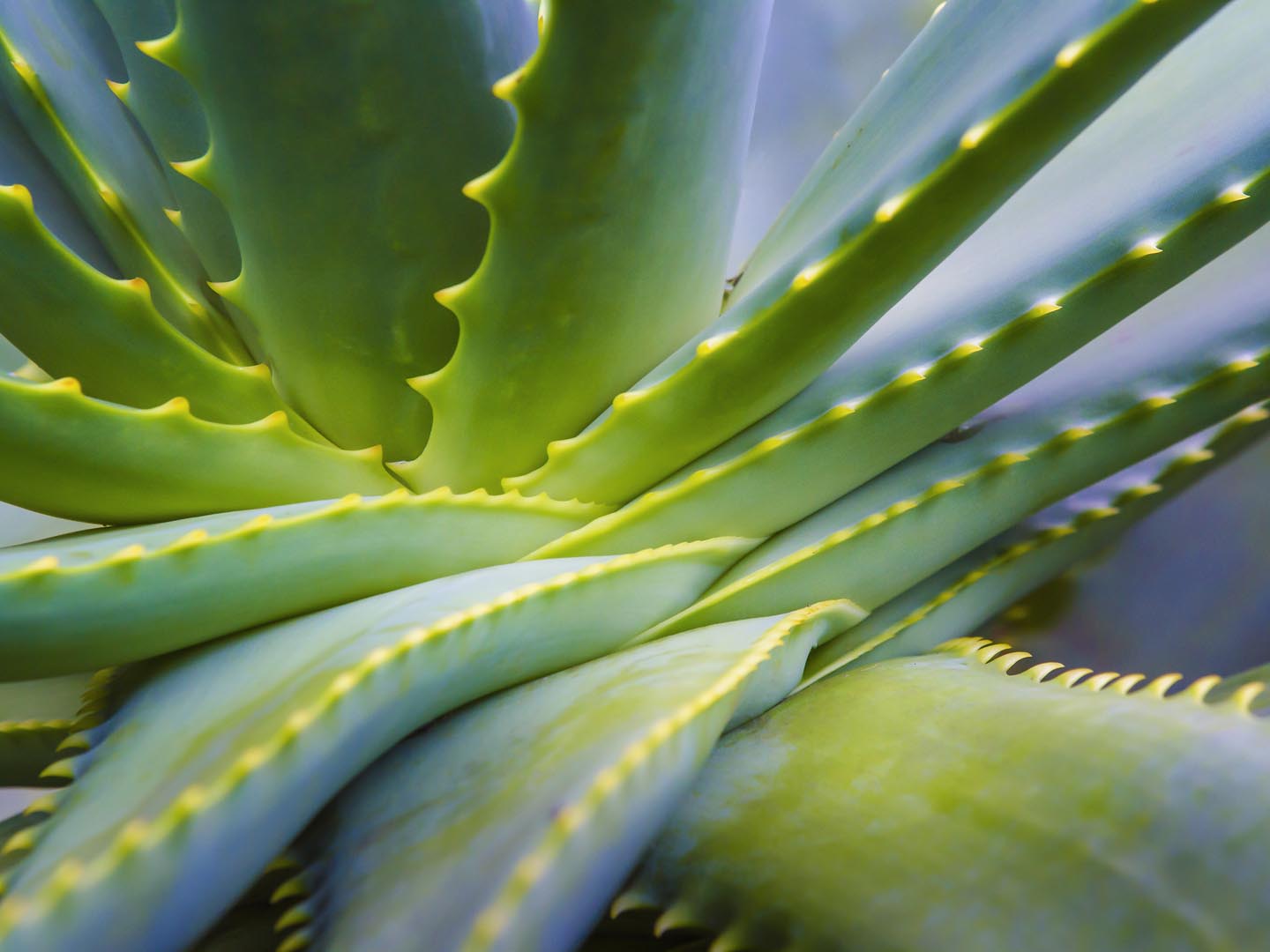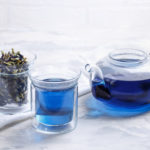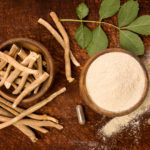Chicory

Cichorium intybus
Chicory, or chicory root, is a flowering plant native to the Mediterranean region and Europe, but now cultivated worldwide. This perennial herb that grows to three feet in height, and produces blue, daisy-like flowers leading to its other common names – blue daisy, blue dandelion, and blue weed. Chicory leaves are usually bitter and are often used in salads as a substitute for lettuce and spinach. Chicory has long been used in Europe and North America as a coffee substitute or “extender” because the dark-roasted root has a deep, slightly bitter flavor similar to that of coffee, but is caffeine-free and less expensive. In 1766, Frederick the Great banned the importation of coffee into Prussia which led chicory root to be used as a substitute, contributing to the herb’s popularity in Eastern Europe. The use of chicory root spread in North America when Confederate soldiers – cut off from coffee shipments that came through Northern harbors – also used it as a substitute for coffee.
Used for:
Chicory root extract is a dietary supplement produced by mixing dried, ground chicory root with water and then removing the insoluble fiber through filtration – providing a source of soluble fiber. The fiber found in chicory root comes from the carbohydrate known as inulin, and is a commonly added to foods products due to its relatively tasteless, filling properties. A study published in the June 2010 Journal of the American Dietetic Association found most people can tolerate up to 10 grams of native inulin and five grams of “sweet” inulin (a variation of inulin) daily. Due to its ability to improve bowel regularity and act as a prebiotic (a food that supports the health of bacteria in the digestive tract), inulin is considered a “functional food,” that is, a food that has a specific, measurable ability to improve health.
In traditional German folk medicine, chicory was used to treat a variety of ailments including gallstones, gastroenteritis and sinus problems. Animal studies have shown chicory, and the inulin found in chicory, may increase calcium absorption and bone mineral density. Chicory has also shown to exhibit liver-protecting properties and provide liver support in animal studies.
Available in:
Parts of the herb can be found whole and dried, such as the leaves or root, or in tincture.
Herb / drug interactions:
None known
Other safety concerns:
The Natural Medicines Comprehensive Database rates chicory as “unsafe” taken in large amounts during pregnancy as it might start menstruation and cause a miscarriage. Chicory might trigger allergic reactions in people who are sensitive to theAsteraceae/Compositae plant family – plants such as ragweed, chrysanthemums, marigolds, and daisies. Chicory has been shown to stimulate bile production, thus consuming chicory could potentially increase the occurrence of gallstones in some people.
When buying:
Chicory is most commonly available in roasted-root form, as a coffee substitute. Seek organic varieties.
Dosage:
A common dosage is a single cup of chicory “coffee,” which is made from two to four grams of the root in 150 milliliters (about 2/3 cup) of boiling water, steeped for 10 minutes and then strained. Otherwise, one can consume three to five grams of the root daily.
Child dosage:
There is no recommended dosage for children.
Dr. Weil says:
Chicory root is listed among the ingredients in packaged foods because it contains inulin, a carbohydrate fiber. Rather than getting it from processed food, I recommend consuming the whole leaf – sometimes available at farmers’ markets and very easy to grow. You may also enjoy “coffee” made from roasted chicory root; a good choice for people who enjoy coffee’s flavor but want to avoid caffeine.
Overall, chicory root is a high-fiber food useful as a treatment for constipation. It may also help to maintain a healthy balance of bacteria in the intestinal tract, and even help lower cholesterol levels.
Reviewed by Jeff Gladd, M.D., July 2014.
SOURCES:
Bonnema, Angela L., Lore W. Kolberg, William Thomas, and Joanne L. Slavin. “Gastrointestinal tolerance of chicory inulin products.” Journal of the American Dietetic Association 110, no. 6 (2010): 865-868.Chicory. Natural Medicines Comprehensive Database. Stockton, CA: Therapeutic Research Faculty. [Updated Dec.21, 2012; Reviewed Dec.21, 2012; Accessed Feb. 25, 2014]. http://naturaldatabaseconsumer.therapeuticresearch.com/nd/Search.aspx?rn=4&cs=nonmp&s=NDC&pt=100&id=92&fs=NDC&searchid=45312710
Hassan, Hanaa A., and Mokhtar I. Yousef. “Ameliorating effect of chicory (< i> Cichorium intybus</i> L.)-supplemented diet against nitrosamine precursors-induced liver injury and oxidative stress in male rats.” Food and Chemical Toxicology 48, no. 8 (2010): 2163-2169.
Roberfroid, Marcel B. “Inulin-type fructans: functional food ingredients.”The Journal of nutrition 137, no. 11 (2007): 2493S-2502S.
Roberfroid, Marcel B., Jean Cumps, and Jean-Pierre Devogelaer. “Dietary chicory inulin increases whole-body bone mineral density in growing male rats.” The Journal of nutrition 132, no. 12 (2002): 3599-3602.









